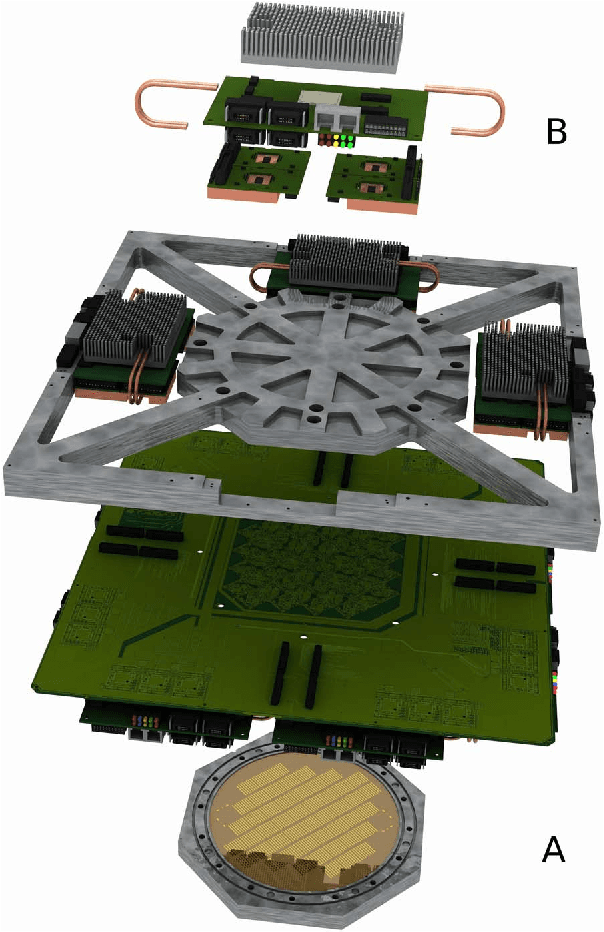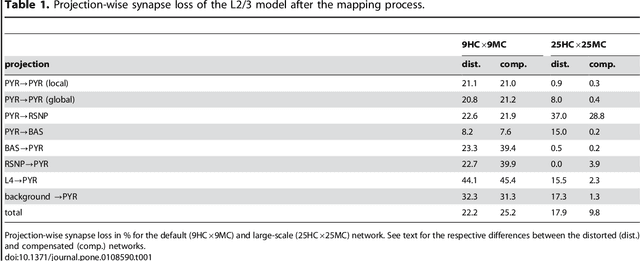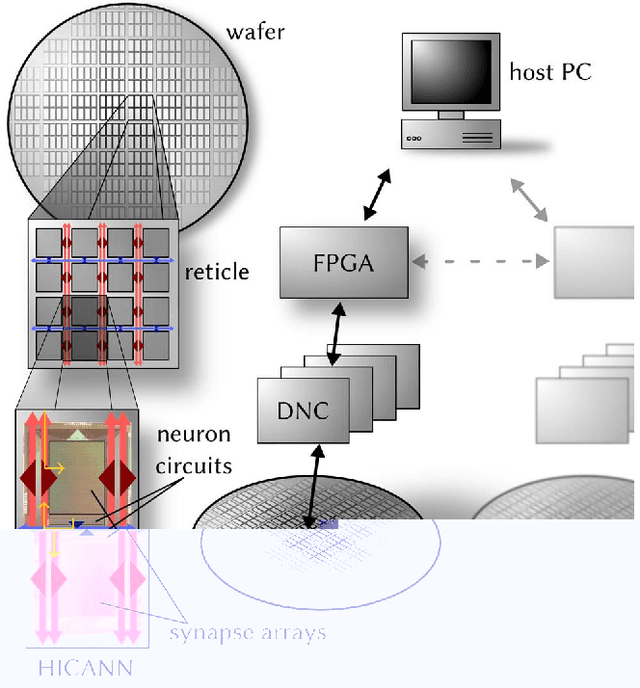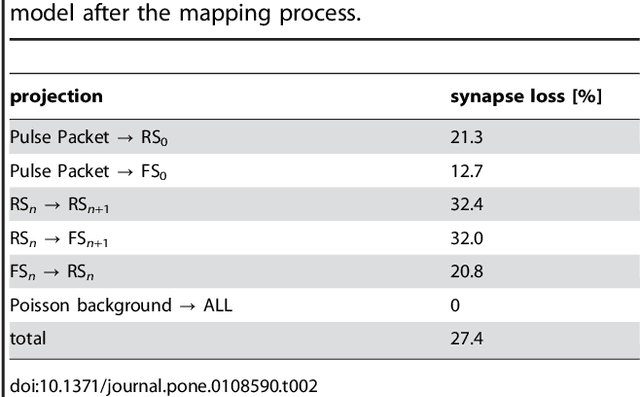Characterization and Compensation of Network-Level Anomalies in Mixed-Signal Neuromorphic Modeling Platforms
Paper and Code
Feb 10, 2015



Advancing the size and complexity of neural network models leads to an ever increasing demand for computational resources for their simulation. Neuromorphic devices offer a number of advantages over conventional computing architectures, such as high emulation speed or low power consumption, but this usually comes at the price of reduced configurability and precision. In this article, we investigate the consequences of several such factors that are common to neuromorphic devices, more specifically limited hardware resources, limited parameter configurability and parameter variations. Our final aim is to provide an array of methods for coping with such inevitable distortion mechanisms. As a platform for testing our proposed strategies, we use an executable system specification (ESS) of the BrainScaleS neuromorphic system, which has been designed as a universal emulation back-end for neuroscientific modeling. We address the most essential limitations of this device in detail and study their effects on three prototypical benchmark network models within a well-defined, systematic workflow. For each network model, we start by defining quantifiable functionality measures by which we then assess the effects of typical hardware-specific distortion mechanisms, both in idealized software simulations and on the ESS. For those effects that cause unacceptable deviations from the original network dynamics, we suggest generic compensation mechanisms and demonstrate their effectiveness. Both the suggested workflow and the investigated compensation mechanisms are largely back-end independent and do not require additional hardware configurability beyond the one required to emulate the benchmark networks in the first place. We hereby provide a generic methodological environment for configurable neuromorphic devices that are targeted at emulating large-scale, functional neural networks.
 Add to Chrome
Add to Chrome Add to Firefox
Add to Firefox Add to Edge
Add to Edge